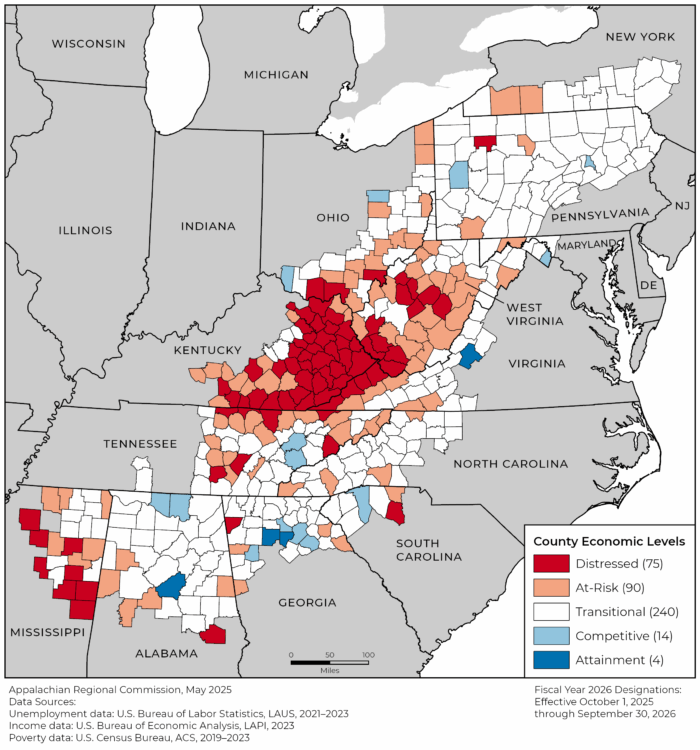Matching refers to the portion of project costs not paid by ARC funds. By law, most ARC grants require match funding. In order to receive an ARC grant award, applicants must submit proof of match that meets ARC’s match requirements. ARC state program managers or an ARC project coordinator can offer guidance on the amount of match required and available match sources, and provide information about any additional state matching requirements.
Many federal requirements related to match funding can be found in 2 CFR § 200.306, “Cost Sharing.” Amounts proposed for match funding must be allowable per applicable federal cost principles and adequately documented. All match funding becomes part of the project and is subject to federal regulations.

How Match Rates Work
Each fiscal year, ARC evaluates economic data and categorizes the economic status of each county in the Appalachian Region as distressed, at-risk, transitional, competitive or attainment. Each economic designation has a different match rate, which determines the amount of funding that ARC is able to provide.

Types of Match
All applications for ARC funding must include documentation that indicates a firm commitment to provide the required match.
Cash is the most common form of match. However, match pledges can also be “in-kind” or non-cash in the form of real property, equipment, supplies, services, training or other expendable property.

Match Management and Resources
Generally, match funds do not need to be expended at an exact time during the project. However, the full required match, as approved by ARC, must be contributed after the project’s start date but before the end of its period of performance. Access these resources to appropriately manage your match funds.


